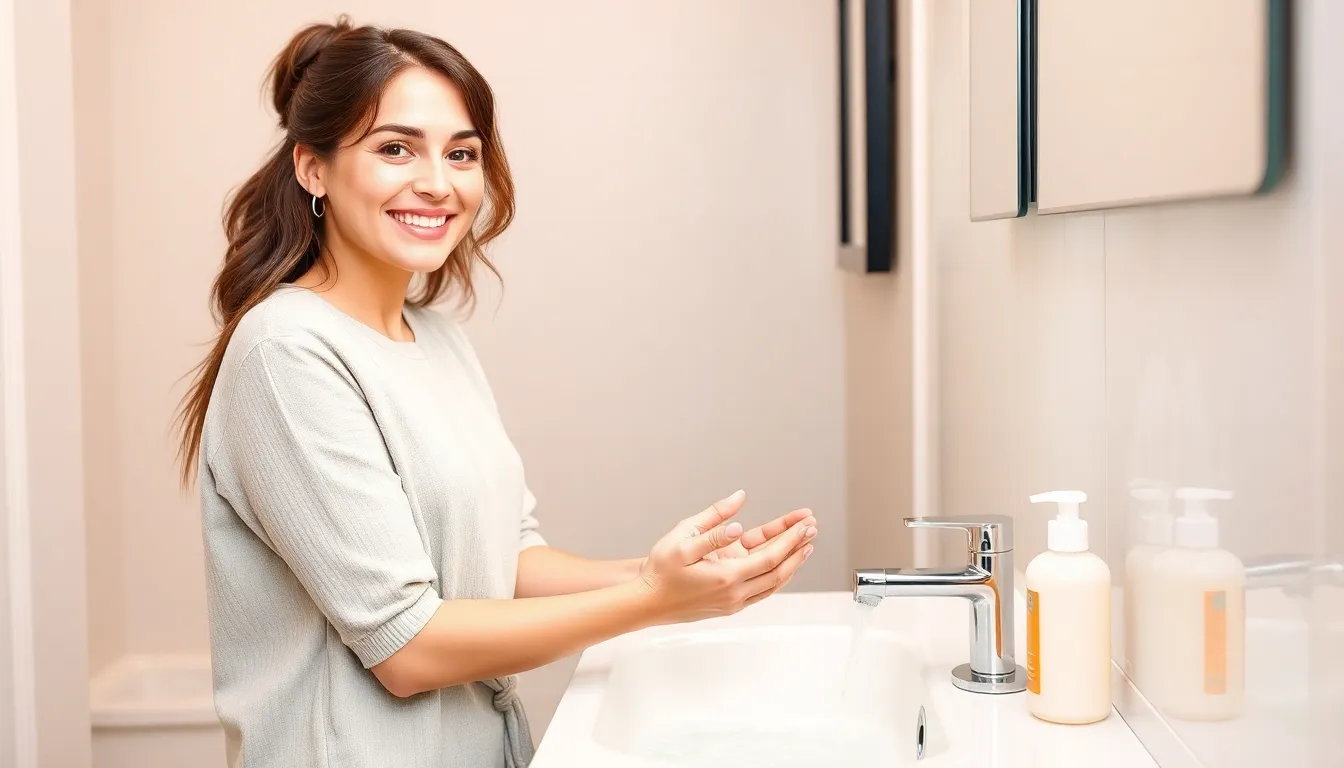Navigating the world of bathroom etiquette can feel like walking a tightrope—one wrong move and you might find yourself in an awkward situation. Whether it’s a public restroom or a guest bathroom, understanding the unspoken rules can save everyone from potential embarrassment. After all, nobody wants to be the person who leaves a trail of chaos in their wake.
From the art of flushing to the delicate dance of handwashing, mastering bathroom manners is essential for maintaining harmony in shared spaces. So, let’s dive into the dos and don’ts that’ll keep your bathroom visits smooth and stress-free. With a sprinkle of humor and a dash of professionalism, this guide will ensure you’re the bathroom hero everyone secretly admires.
Table of Contents
ToggleUnderstanding Bathroom Etiquette
Bathroom etiquette involves unspoken rules that help navigate shared spaces comfortably. Understanding these guidelines can prevent awkward situations in both public and guest restrooms.
Importance of Bathroom Etiquette
Bathroom etiquette plays a crucial role in maintaining respect and cleanliness within shared environments. Observing these practices fosters a positive experience for everyone involved. Proper flushing, thorough handwashing, and ensuring personal items remain private are essential behaviors. These actions significantly contribute to a pleasant atmosphere. Adhering to bathroom norms reinforces communal respect and encourages others to follow suit.
Common Misconceptions
Many misconceptions surround bathroom etiquette that influence behavior negatively. Some individuals believe flushing is optional when using a single-use restroom. This notion, however, is incorrect and can lead to unpleasant experiences for the next user. Another misunderstanding involves adequate handwashing, with some thinking rinsing alone suffices. Proper handwashing requires soap and thorough scrubbing to eliminate germs effectively. Finally, the idea that no one notices restroom behavior can lead to lapses in etiquette. It’s essential to recognize that others are indeed affected by one’s actions.
Personal Hygiene Practices


Personal hygiene practices play a vital role in bathroom etiquette. Good habits prevent the spread of germs and maintain cleanliness in shared spaces.
Handwashing Habits
Handwashing becomes essential after using the restroom. Research shows that effective handwashing reduces illness by 30%. Scrubbing with soap for at least 20 seconds ensures thorough cleaning. Rinsing thoroughly under running water removes all soap and germs. Utilizing paper towels can help with turning off faucet handles and opening doors. Remembering to wash hands before eating also promotes better health.
Proper Use of Toiletries
Proper use of toiletries maintains cleanliness in bathrooms. Toilet paper should be used sparingly and responsibly. Flushing only after proper disposal of waste keeps the toilet clean and reduces odors. Using air fresheners or odor eliminators can enhance the ambiance. Sharing toiletries, such as soap and hand lotion, requires mutual consent to respect personal spaces. Returning items to their proper places allows others easy access.
Shared Bathroom Etiquette
Shared bathrooms require mindfulness and consideration to ensure comfort for everyone involved.
Respecting Privacy
Privacy stands as a fundamental aspect of bathroom etiquette. Knocking before entering a stall communicates respect for others’ space. When waiting, standing at a distance helps maintain personal boundaries. Avoiding conversations or loud noises acknowledges the need for quiet. Users should also take care to leave the door securely closed, preventing accidental intrusions. Everyone deserves a moment of privacy while attending to personal care.
Managing Time Wisely
Time management enhances the shared bathroom experience. Spending more than a few minutes can inconvenience others waiting. If a task requires extended time, consider finishing it in a private space. Keeping toiletries organized helps streamline routines, allowing quicker access to necessary items. Prompt flushing and swift handwashing contribute to efficient usage. Prioritizing these habits fosters a smoother flow, ensuring everyone can use the facilities comfortably and without frustration.
Workplace Bathroom Etiquette
Workplace bathroom etiquette plays a vital role in maintaining a pleasant atmosphere for everyone. Good habits promote cleanliness and respect among colleagues.
Cleanliness Standards
Maintaining cleanliness is essential in shared bathrooms. Users should always flush toilets completely after each use. It’s important to leave sinks and countertops tidy by cleaning up any spills as well. Avoid excessive use of toilet paper to minimize waste. Handwashing follows usage and must include soap scrubbed for 20 seconds. Drying hands is necessary to prevent germ spread. If using shared supplies like soap or towels, it’s courteous to ensure they remain clean and stocked. Observing these cleanliness standards fosters a hygienic environment, making the workplace more comfortable for all.
Professional Behavior
Professionalism extends to bathroom use in the workplace. Respecting privacy is key; knocking before entering stalls is a must. Quiet behavior creates a soothing atmosphere. Users should limit time in the bathroom, allowing others to access facilities. Organizing personal items maintains efficiency and reduces delays. Using the bathroom for unintended activities, like lengthy phone calls, detracts from a professional setting. Prioritizing these behaviors supports positive interactions and enhances overall workplace morale.


